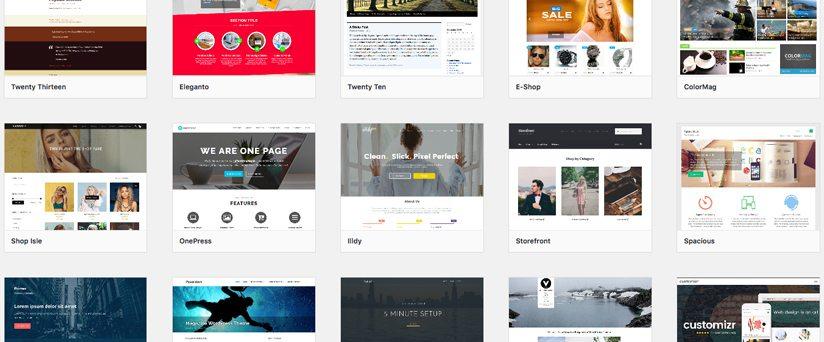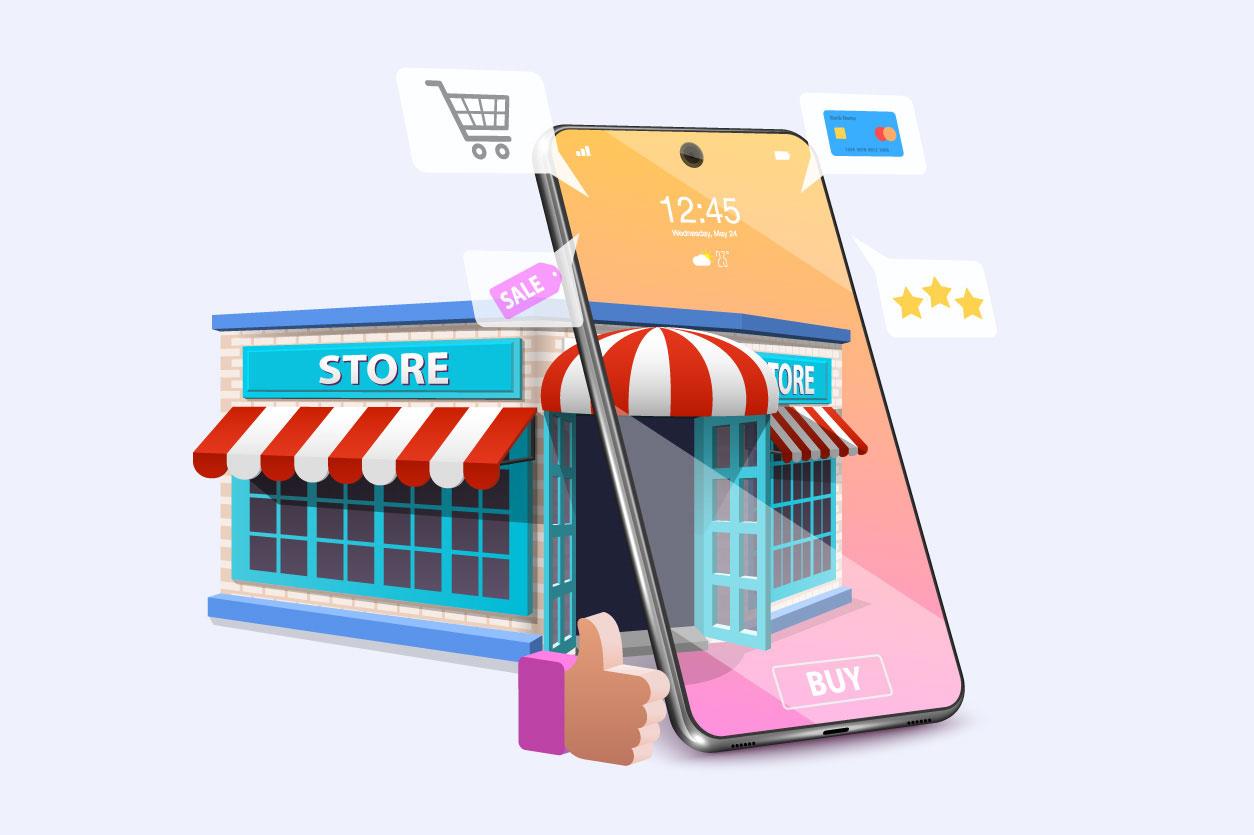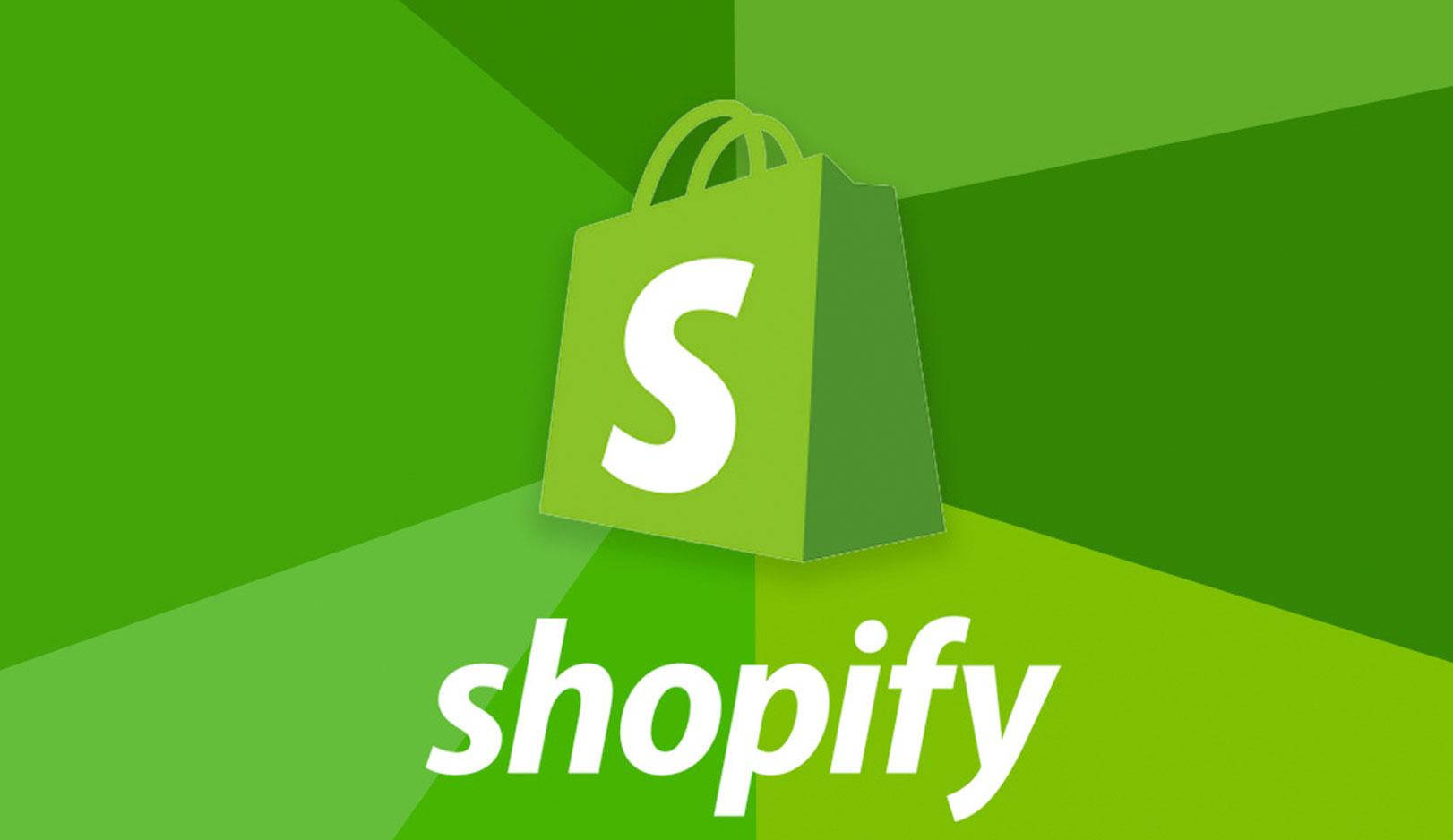Are you dreaming of launching your very own online store but don’t know where to start? You’re not alone! With the rise of e-commerce, more and more budding entrepreneurs are looking for ways to turn their passion into profit from the comfort of their home. Fortunately, starting an online store has never been easier—especially with WordPress, one of the most popular and user-pleasant platforms out there. In this ultimate guide, we’re going to walk you through every step of the process, from selecting the right hosting service to choosing the perfect theme and plugins that will make your store stand out. Trust us, whether you’re a tech whiz or a complete novice, you’ll find everything you need to get your online shop up and running smoothly. So, grab a cup of coffee, and let’s dive into the exciting world of e-commerce together! Your dream store is just a few clicks away!
Understanding the Benefits of Starting an Online Store with WordPress
When it comes to launching an online store,WordPress emerges as a formidable platform that not only simplifies the process but also maximizes your potential for success. With its user-friendly interface and extensive customization opportunities, it allows entrepreneurs to create stunning e-commerce sites without needing extensive technical knowledge. Here are some compelling reasons to consider WordPress for your online business:
- Cost-Effectiveness: WordPress itself is free, and you can find numerous free themes and plugins to get your store up and running without breaking the bank. Even premium options are often reasonably priced.
- Versatility and Scalability: Whether you’re selling a few items or thousands, WordPress can grow with your business. You can easily add new products, categories, or features as your store evolves.
- SEO Friendly: WordPress is built with SEO in mind. With the right plugins, you can optimize your site to improve your search engine rankings and attract more visitors.
- Wide Range of Plugins: There’s a plugin for almost everything on WordPress, from payment processing to inventory management. WooCommerce, the leading e-commerce plugin, offers a wealth of features to enhance your store.
- Community support: With a massive community of users and developers, you’ll find ample resources, tutorials, and forums to assist you as you build and grow your online store.
additionally, WordPress offers various themes specifically designed for e-commerce, which can give your store a professional look right from the start. These themes are often responsive, ensuring that your site looks great on any device—an essential factor in today’s mobile-first world.
Furthermore, security is a top priority for any online store, and WordPress has numerous security plugins that can help protect your business from potential threats. Regular updates from WordPress also ensure that you have access to the latest security features, keeping your store safe.
| Feature | Benefit |
|---|---|
| user-Friendly Interface | Easy for beginners to navigate and manage. |
| Customizable Design | Match your brand’s identity with various themes. |
| Extensive Plugin Library | Enhance functionality without coding. |
| Strong Community Support | Access to help and resources when needed. |
By leveraging the power of WordPress, you can establish a robust online presence that not only meets the demands of your customers but also positions your business for long-term success. With its blend of versatility, functionality, and support, starting your online store on WordPress is not just a smart choice—it’s a strategic one.

Choosing the Right WordPress Theme for Your Online Store
When it comes to building an online store with WordPress,selecting the right theme is a crucial first step. your theme not only determines the visual appeal of your store but also impacts functionality and user experience.A well-chosen theme can enhance your brand image and lead to higher conversion rates. Here are some essential factors to consider while making your choice:
- Responsiveness: Ensure that your theme is mobile-friendly. With a meaningful amount of shopping done on mobile devices, a responsive design will provide a seamless experience for your customers.
- Customization options: Look for themes that offer flexibility in customization. You should be able to change colors, fonts, and layouts to align with your brand identity without needing extensive coding knowledge.
- Compatibility with Plugins: Your theme should be compatible with essential e-commerce plugins like WooCommerce. Check if the theme supports these plugins to take full advantage of e-commerce functionalities.
- Speed and Performance: A slow-loading site can deter customers. Choose themes that are optimized for speed to enhance user satisfaction and improve SEO.
- Support and Updates: Opt for themes from reputable sources that provide regular updates and customer support. This ensures that your store remains secure and up-to-date with the latest features.
Another critical aspect to evaluate is the layout and design. A cluttered or outdated aesthetic can drive potential customers away. Clean, modern designs that prioritize product visibility and easy navigation will keep users engaged. Consider the following layout features:
| Feature | Importance |
|---|---|
| Grid or List View Options | Allows users to choose how they want to browse products. |
| Product Zoom Functionality | Enhances product viewing, encouraging purchases. |
| User Reviews Section | Builds trust and encourages decision-making. |
Ultimately, the theme you select should resonate with your target audience. Take the time to research themes that align with your niche and customer preferences. Consider looking at live demos to see how the theme functions in real-time. Remember, your choice of theme is an investment in your store’s success, so choose wisely!

Essential Plugins to Boost Your E-Commerce Functionality
When it comes to optimizing your e-commerce store on WordPress,choosing the right plugins can make a world of difference. not only do they enhance functionality, but they also improve user experience and can ultimately lead to increased sales. Here are some must-have plugins to consider:
- WooCommerce: The backbone of any WordPress e-commerce site, WooCommerce offers comprehensive features to manage products, inventory, and payments.
- Yoast SEO: Enhance your store’s visibility with this powerful SEO plugin, ensuring your products rank well in search engines.
- WPForms: Create custom forms effortlessly, allowing for easy customer inquiries, surveys, or feedback that can improve your service.
- Mailchimp for WooCommerce: This plugin integrates seamlessly with WooCommerce to help you manage your email marketing campaigns and retain customers.
- WooCommerce Stripe Payment Gateway: Accept credit card payments securely through this reliable gateway, enhancing customer trust.
Each of these plugins serves a unique purpose, and when combined, they create a robust e-commerce platform. For instance, while WooCommerce handles the core sales functionalities, Yoast SEO ensures that your products are easily discoverable online. The synergy between these plugins can be the key to unlocking your store’s potential.
| Plugin Name | Key Feature | Price |
|---|---|---|
| WooCommerce | Full e-commerce functionality | Free (with add-ons) |
| Yoast SEO | SEO optimization tools | Free / Premium options |
| WPForms | Form builder | Free / Premium options |
| Mailchimp for WooCommerce | Email marketing integration | Free |
| WooCommerce Stripe | Secure payments | Free |
Integrating these essential plugins will not only streamline your operations but also provide your customers with a seamless shopping experience. With the right tools in place, your online store can thrive in the competitive e-commerce landscape. Don’t overlook the power of effective plugins; they are your allies in building a accomplished online business.
Step-by-Step guide to Setting Up WooCommerce
Setting up WooCommerce is a breeze, and with just a few steps, you’ll be on your way to running a successful online store. First, you’ll want to ensure you have WordPress installed on your site. If you haven’t done this yet, you can easily install WordPress through your hosting provider’s dashboard with just a few clicks.
Once WordPress is up and running, head over to the Plugins section in your WordPress dashboard. Search for WooCommerce and click Install Now. After the installation is complete, make sure to activate the plugin. This will trigger the WooCommerce setup wizard, which will guide you through the initial configuration of your online store.
During the setup, you will be asked to provide some essential information:
- Store Location: Specify where your store is based.
- Currency: Choose the currency you want to use.
- Payment Methods: Select the payment options you’d like to offer your customers.
After completing the wizard, it’s time to add products to your store. Click on Products in your dashboard, than select Add New. Here, you can enter the product title, description, price, and images. Don’t forget to use categories and tags for better organization. Here’s a fast reference table for product types:
| Product Type | Description |
|---|---|
| Simple Product | A physical product with no variations. |
| Variable Product | A product with multiple variations (e.g., sizes, colors). |
| Group Product | A collection of simple products that can be purchased individually. |
| External/Affiliate Product | A product sold on another website. |
to enhance your store’s functionality, explore WooCommerce extensions available in the marketplace. You can find everything from shipping and tax calculators to advanced analytics tools that help you track your sales performance. With these tools, you can customize the shopping experience for your customers and boost your sales.

Optimizing Your Product Pages for Maximum conversions
To drive conversions on your product pages, it’s essential to create an engaging and user-friendly experience. Start by crafting compelling product descriptions that not only highlight features but also emphasize benefits. Potential buyers want to know how your product can solve their problems or enhance their lives. Use persuasive language that resonates with your target audience and invokes emotions.
Next, focus on high-quality images. Visual appeal plays a critical role in online shopping. Include multiple images from various angles,and consider adding a zoom feature so customers can inspect details closely. Additionally, support your visuals with customer reviews and testimonials. Authentic reviews can build trust and provide social proof that your product is worth buying. place these testimonials prominently to catch the attention of potential customers.
Another vital aspect is the call-to-action (CTA). Your CTA should be clear, eye-catching, and strategically placed. Instead of a generic “Buy Now” button, try somthing more engaging like “Grab Yours Today!” or “Get Yours While Supplies Last!” This small tweak can substantially impact your conversion rates. Ensure the button color contrasts with the background for maximum visibility and make it large enough to stand out.
Don’t forget about the importance of mobile optimization. With a growing number of consumers shopping on mobile devices, make sure your product pages are responsive. This means that all elements, from images to buttons, should resize and rearrange seamlessly on smaller screens. Conduct user testing to identify any issues and ensure a smooth shopping experience for mobile users.
Lastly, consider implementing a sense of urgency. Adding elements like limited-time offers, countdown timers, or low-stock indicators can create a fear of missing out (FOMO) that encourages users to complete their purchases. These tactics can effectively compel customers to act quickly, ultimately boosting your conversion rates.
Mastering the Art of SEO for Your Online Store
In the competitive world of e-commerce, having a robust SEO strategy is crucial for your online store’s success. Mastering SEO not only drives organic traffic but also enhances your visibility on search engines, helping potential customers discover your products. Here’s how to effectively optimize your online store for search engines.
First and foremost, keyword research is the foundation of any successful SEO strategy. Begin by identifying relevant keywords that your target audience is using to find products similar to yours. Utilize tools like Google Keyword Planner or SEMrush to uncover high-traffic keywords with manageable competition. Once you have a solid list, integrate these keywords naturally throughout your website, focusing on:
- Product titles
- Meta descriptions
- Image alt tags
- Category and tag pages
Next, it’s essential to optimize your website architecture. A well-structured site not only enhances user experience but also facilitates smoother crawling by search engine bots. Ensure that your website has a clear hierarchy with categories and subcategories. Use internal linking to connect related products and content, which helps improve page authority. Consider creating a sitemap to give search engines a roadmap of your site’s structure.
Another critical aspect is content creation. Regularly updating your online store with high-quality, original content can significantly boost your SEO ranking. Consider starting a blog related to your niche, where you can share product tips, industry news, or buying guides.This not only serves to engage your audience but also allows you to incorporate your target keywords organically, enhancing your site’s relevance in search results.
| SEO Element | Best Practices |
|---|---|
| Title Tags | Include primary keywords and keep it under 60 characters |
| Meta Descriptions | Make it compelling and under 155 characters |
| Image Optimization | Use descriptive file names and alt text |
| Mobile Optimization | Ensure your site is responsive and user-friendly on mobile devices |
Lastly,don’t underestimate the power of backlinks. Building relationships with other bloggers and influencers in your niche can lead to valuable backlinks that enhance your store’s credibility and authority. Consider guest posting, collaborating on content, or even participating in online forums to increase your visibility and link profile.
Creating a Seamless Checkout Experience for Your Customers
When it comes to online shopping, the checkout experience can make or break your sales. A seamless checkout process not only increases conversion rates but also enhances customer satisfaction. Here are a few strategies to ensure your customers enjoy a hassle-free checkout:
- Simplify Your Checkout Form: Limit the number of fields your customers have to fill out. The more information you request,the more likely they are to abandon their cart. Consider only asking for essential information during the checkout process.
- Offer Guest Checkout: Not everyone wants to create an account to make a purchase. By allowing guest checkout, you reduce friction and make the buying process quicker.
- Implement Auto-Fill Features: Utilize browser auto-fill capabilities to save customers time when entering their information. This small convenience can significantly improve their experience.
- Provide Multiple Payment Options: Ensure you offer a variety of payment methods, such as credit/debit cards, PayPal, and digital wallets. This flexibility caters to the preferences of different customers and can lead to higher sales.
- Utilize Progress Indicators: If your checkout process includes multiple steps, inform customers of their progress. A simple progress bar can guide them through the process and reduce anxiety about how much longer it will take.
Additionally, consider the aesthetics and functionality of your checkout page.A cluttered or hard-to-navigate page can frustrate customers, leading to cart abandonment. Here are a few design tips:
| Design Element | Suggestion |
|---|---|
| Color Scheme | Use contrasting colors to highlight action buttons like “Checkout” and ”Pay Now.” |
| Font Size | Ensure text is easy to read; avoid overly small fonts. |
| Button Design | Make buttons large and clickable, with enough padding for touch devices. |
| Mobile Responsiveness | Ensure the checkout page is fully responsive for seamless mobile shopping. |
Lastly, provide clear communication throughout the checkout process. Display security badges to reassure customers that their information is safe, and clearly outline shipping options and costs.Transparency in these areas builds trust and can make all the difference in retaining a customer until the final confirmation of their order.

Building Trust with Secure payment Options
In today’s digital marketplace, customers are more discerning then ever when it comes to how they make purchases. Offering secure payment options is not just a nice-to-have; it’s a fundamental necessity for building trust and encouraging conversions. When shoppers feel confident that their financial information is safe, they are far more likely to complete their purchases. Here are some strategies to ensure your payment options foster trust.
- SSL Certificates: Use an SSL certificate to encrypt data transmitted between your customers and your website. This not only protects sensitive information but also indicates to customers that you take their security seriously.
- Payment Gateway Integration: Choose reputable payment gateways like PayPal, Stripe, or Authorize.Net. These platforms are trusted by consumers and can provide a seamless checkout experience that enhances your store’s credibility.
- Clear Return Policy: Clearly outline your return and refund policies. When customers know they have options if something goes wrong, their anxiety about completing a purchase diminishes significantly.
Furthermore, displaying trust signals can significantly enhance your credibility. Incorporating logos of accepted payment methods on your site can reassure customers about their choices. Here’s a quick visual guide to the most trusted payment methods:
| Payment Method | Trust Level |
|---|---|
| Visa | High |
| PayPal | High |
| MasterCard | High |
| American Express | Medium |
| Bitcoin | Growing |
Lastly, don’t underestimate the power of customer reviews and testimonials. Featuring feedback from satisfied customers, especially regarding their payment experiences, can greatly influence new customers’ decisions. Consider integrating a review system that highlights positive experiences related to your checkout process.
By prioritizing secure payment options and incorporating these strategies, you can not only alleviate customer concerns but also foster loyalty and long-term relationships. Remember, a trustworthy payment system is a cornerstone of a successful online store.

Promoting Your Online Store: Strategies That Work
Once you’ve set up your online store with WordPress, the next crucial step is to get the word out. In today’s digital landscape, having a stunning website is only half the battle; you need effective promotional strategies to draw in customers. Here are some tried-and-true methods to help you stand out from the competition.
Leverage Social Media
Social media platforms are an invaluable resource for promoting your online store.By creating engaging content around your products, you can build a community and drive traffic to your site. Consider these tactics:
- Use eye-catching visuals: Showcase your products with high-quality images and videos.
- Run targeted ads: Utilize Facebook and Instagram ads to reach a tailored audience.
- Engage with followers: Respond to comments and messages to foster customer loyalty.
Optimize for Search Engines
Search engine optimization (SEO) is another powerful tool for driving organic traffic to your store. By optimizing your product pages, you can improve your visibility in search engine results:
- Use relevant keywords: Research and integrate keywords that your target audience is searching for.
- Create valuable content: Start a blog to provide insights, tips, and tutorials related to your products.
- Optimize meta tags: Ensure that your titles and descriptions are well-crafted to entice clicks.
email Marketing
Email marketing remains one of the most effective ways to convert leads into customers.By building a mailing list,you can keep potential buyers informed and engaged. Here’s how to get started:
- Offer incentives: Provide discounts or exclusive content in exchange for email sign-ups.
- Segment your list: Tailor your messages based on customer behavior and preferences.
- Automate campaigns: Use tools like Mailchimp or Constant Contact to streamline your email marketing efforts.
Utilize Influencer Collaborations
Partnering with influencers can provide your online store with immediate visibility and credibility. Choose influencers whose audience aligns with your target market.Here are some collaboration ideas:
- Product reviews: Send free products to influencers for them to share their honest reviews.
- Giveaways: Host joint giveaways to attract new followers and potential customers.
- Sponsored posts: Work with influencers to create content that highlights your products.
analyze and Adjust
it’s essential to regularly analyze your promotional efforts to see what’s working and what’s not. Use tools like Google Analytics to track visitor behavior, sales data, and campaign performance.This analysis will help you:
- Identify successful strategies: Focus on what drives the most traffic and sales.
- Make informed decisions: Adjust your marketing strategies based on data.
- Stay adaptable: Be ready to pivot to new ideas and methods as trends change.
| Strategy | benefits |
|---|---|
| Social Media Marketing | Increases brand awareness and engagement |
| SEO Optimization | Boosts organic traffic and search visibility |
| Email Marketing | Enhances customer retention and conversions |
| Influencer Collaborations | Expands reach and builds trust |

Analyzing Data to Drive Growth and Increase Sales
Unlocking Insights Through Data Analysis
When it comes to running an online store, data is your best friend. Understanding customer behavior, sales patterns, and market trends can significantly enhance your strategy. By leveraging tools available in WordPress and plugins like WooCommerce, you can gather essential insights on how your store is performing. Here’s how you can turn raw data into actionable strategies:
- Track Customer Journeys: Utilize analytics tools to map out how customers navigate through your site. This can help identify areas for advancement.
- Analyze Sales Trends: Look at your sales data over time to detect patterns. As a notable example, are there specific products that sell better during certain months?
- Segment Your Audience: By categorizing your customers based on their buying habits, you can tailor your marketing strategies to closely fit each group’s needs.
Creating a data-driven marketing plan is crucial for scaling your business. With the right insights, you can make informed decisions that directly impact your sales. Consider implementing A/B testing to experiment with different strategies:
| Strategy | Expected Outcome |
|---|---|
| Changing Product Descriptions | Higher conversion rates |
| Adjusting Pricing | Increased sales volume |
| Modifying Call-to-Action Buttons | Improved click-through rates |
Don’t forget about the power of feedback! Actively solicit reviews and ratings from your customers. This not only helps you understand their preferences but also builds trust with potential buyers. Use tools like Google Forms or built-in WordPress plugins to gather this information easily.
remember that data analysis isn’t a one-time task. It’s an ongoing process. Regularly revisiting your data will help you stay ahead of the competition and continuously refine your strategies. By committing to this process, you position your online store for sustained growth and success.
Frequently Asked Questions (FAQ)
Q: Why should I consider starting an online store with WordPress?
A: Great question! WordPress is an incredibly flexible and powerful platform that powers over 40% of all websites. It’s user-friendly, even for beginners, and offers a plethora of themes and plugins specifically designed for eCommerce. Plus, with tools like WooCommerce, you can easily set up an online store without needing extensive coding knowledge. It’s an excellent choice if you want full control over your website and the ability to scale as your business grows.
Q: What are the essential steps to get started?
A: starting an online store with WordPress involves a few key steps:
- Choose a Domain Name: pick something memorable that reflects your brand.
- Select a Hosting Provider: look for one that’s reliable and offers good customer support. Manny providers offer specialized plans for WordPress hosting.
- Install WordPress: Most hosting services have a one-click install option, making this super easy.
- Install WooCommerce: This free plugin turns your website into a fully functional online store.
- Choose a Theme: There are many eCommerce themes available, both free and premium, to help you achieve the look you want.
- Add Products: Start adding your products, complete with descriptions, images, and pricing.
- Set Up Payment Methods: WooCommerce supports various payment gateways to make transactions seamless for your customers.
By following these steps, you’re on your way to launching a successful online store!
Q: Do I need coding skills to build my store?
A: Not at all! One of the best things about WordPress and WooCommerce is that they are designed with users in mind. You can customize your store using drag-and-drop builders and plugins without writing a single line of code. However, if you do have coding skills, you can leverage them for even more customization!
Q: What about marketing my online store? How do I attract customers?
A: Marketing is crucial for any online store! Here are a few strategies you can implement:
- SEO: Optimize your website for search engines. Use relevant keywords in your product descriptions and blog posts to help people find you.
- Social Media: Leverage platforms like Instagram, Facebook, and Pinterest to showcase your products and engage with potential customers.
- Email Marketing: Build a mailing list and send newsletters with promotions, new product launches, and valuable content.
- Content Marketing: Start a blog related to your niche to attract visitors and establish yourself as an authority.
- Paid Ads: Consider using Google Ads or Facebook Ads to drive targeted traffic to your site.
By combining these strategies, you can create a buzz around your store and start generating sales!
Q: What are some common pitfalls to avoid when starting my online store?
A: It’s smart to think ahead! Here are a few common pitfalls:
- Neglecting Mobile Optimization: Ensure your store is mobile-friendly since many shoppers browse on their phones.
- Ignoring Customer Feedback: Listen to your customers! Their insights can guide improvements and help build loyalty.
- Overcomplicating Navigation: Keep your site user-friendly. A simple, clear navigation structure helps customers find what they need quickly.
- Forgetting About security: Invest in an SSL certificate and other security measures to protect your customers’ data.
- Skipping Analytics: Use tools like Google Analytics to monitor your traffic and sales. This data is invaluable for making informed decisions.
By being aware of these pitfalls, you can sidestep them and set your store up for success!
Q: How can I ensure my online store stands out from the competition?
A: Standing out in a crowded marketplace requires a unique approach! Focus on your brand’s unique value proposition—what makes you different? You can also:
- Offer Remarkable Customer Service: Respond to inquiries promptly and make returns easy.
- Create High-Quality Content: Use storytelling in your product descriptions and blogs to connect with customers emotionally.
- Build a Community: Engage with your customers on social media and encourage them to share their experiences.
- Utilize User-Generated Content: Encourage customers to share their photos and reviews.This not only builds trust but also provides authentic marketing material.
by implementing these strategies, you’ll build a loyal customer base and set yourself apart from the competition!
Q: Is it worth investing in premium themes and plugins for my online store?
A: Absolutely! While there are many free options available, premium themes and plugins frequently enough provide better support, more features, and enhanced security. They can save you time and effort in the long run, allowing you to create a more professional-looking store and improve the user experience. Think of it as an investment in your business—one that can lead to increased sales and a higher return on investment!
Q: how do I keep my online store up-to-date and running smoothly?
A: Keeping your store updated is crucial for security and performance. Here are a few tips:
- Regularly Update WordPress, Themes, and Plugins: Always update to the latest versions to benefit from new features and security patches.
- Backup Your Website: Use plugins to create regular backups, so you can restore your site if anything goes wrong.
- Monitor Site Performance: Use tools to check your website’s speed and make adjustments to improve load times.
- stay Informed: Follow blogs and forums in the eCommerce space to keep up with trends and updates.
By staying proactive, you’ll ensure your store runs smoothly and continues to thrive!
Feel free to use these questions and answers to create an engaging article that informs and persuades readers to start their online store with WordPress!
Wrapping Up
As we wrap up this ultimate guide on starting your online store with WordPress, we hope you’re feeling inspired and ready to take the plunge! Remember, launching an online store is more than just setting up a website; it’s about crafting an experience for your customers and sharing your passion with the world.
With the powerful tools and plugins wordpress offers, you have everything you need right at your fingertips. Whether you’re selling handmade crafts, digital products, or curated collections, you can create a stunning storefront that reflects your unique brand.So, what are you waiting for? Dive in, explore, and let your entrepreneurial spirit soar! The journey might have its challenges, but with determination and the right resources, you’ll be well-equipped to conquer them. plus, the thrill of seeing your store come to life and making your first sale is absolutely worth it!
If you have any questions as you embark on this exciting venture, don’t hesitate to reach out. We’re here to support you every step of the way. Now go ahead, unleash your creativity, and watch your online store flourish! Happy selling!




